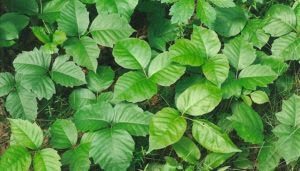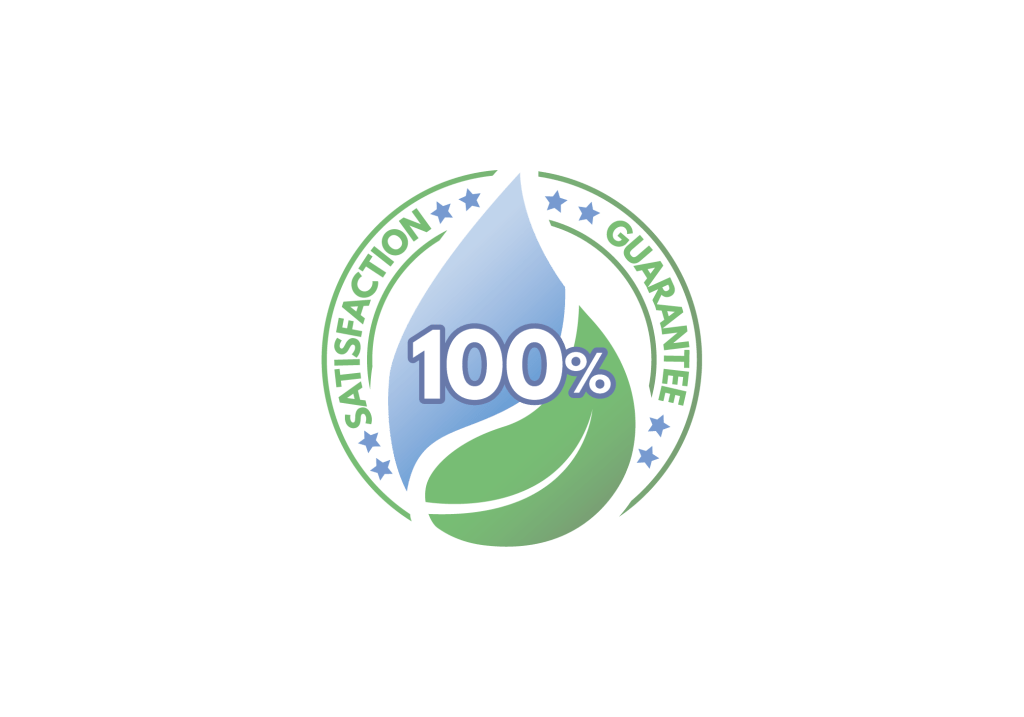Have you seen poison ivy taking over your trees, edges, stumps, or showing up in the form of ground cover or shrubs?
You can’t fight it if you don’t know what it looks like! Ever heard the old saying, “Leaves of three, leave them be”? Watch for three leaves with smooth sides and pointy tips. They may also look glossy and may be lobed or saw-toothed.

Dealing with poison ivy at home is manageable, but requires vigilance even after treatment. Poison ivy is a perennial plant that grows back from the roots and if they are overlooked, it may result in the return of the unwanted plant. It often spreads by means of underground runners may take three or four tries to completely remove.
Try any of these methods for successful eradication, but always wear washable, tightly woven long sleeve shirts, longs socks, long pants tucked into socks, boots or shoes that can be hosed off later and gloves (I would recommend heavy black garbage bags instead – I’ll tell you why later) when working around poison ivy. Goggles and a breathing mask are also recommended when removing it. Even light contact can end with painful results.
A dry day with no wind is the safest time for removing poison ivy, especially if you will be using a spray (you do not want it blowing back at you, nor do you want it blowing on landscape plants).
There’s four different ways to getting rid of this pesky plant:
1. Smothering
- Place a sheet of heavy cardboard, plastic or rubber over the invaded area.
2. Using Natural Spray
- Dissolve one cup salt in a gallon of water and add a tablespoon of dish soap to create a solution that can be sprayed on poison ivy (multiple treatments required). Spraying white vinegar on the plants is another common treatment usually requiring multiple treatments for eradication.
3. Dousing with Boiling Water
- Pour boiling hot water over the roots multiple treatments required).
4. Pulling
- Get yourself a helper, a big rolling trashcan with a plastic bag liner or a large plastic trash bag on a stand. Wait until the ground is soaking wet (or drench it yourself), and slip a heavy black plastic garbage bag over each hand, locate where each vine enters the soil and pull slowly with one of your bagged hands; the vine should come right up for you, root and all. If it resists, have your helper soak the soil around the base of the vine with a garden hose. If the vine snaps with the root still in the soil, have your helper put a little stake into that spot to mark it, then come back the next day and drench the area with strong undiluted vinegar to kill the root, or mulch it with several inches of something thick and impenetrable to smother it.
Don’t touch anything but the inside of the bags. When it’s all out, fold the bag that’s been covering your other hand over the bagged hand holding the pulled ivy, and drop the vine and both bags into the bigger, heavy trash bag.
Another way to do it is to cut the plants to ground level with shears or pruners, remove all the stems you can see and dispose of them in the garbage bags. Use a shovel to dig out roots if you can and place those in the garbage bags as well.
Disposal and Tool Clean Up:
Whatever strategy you take against poison ivy, seal plant remains in a bag and dispose off-site. Burning poison ivy can result in severe eye irritation and possible respiratory damage and composting may result in accidental contact down the line. If you used rubber gloves, throw them away.
All clothing and tools should be immediately washed after contact with poison ivy. Urushiol, the oily allergen in the plant, is both a toxin and an irritant and can remain active for months or even years. Also, know that it covers not only the leaves, but the entire plant. So even when the leaves are gone, the urushiol isn’t. Tools used for removing poison ivy must be disinfected. Rinse your pruners and shovel, including the handles, with rubbing alcohol, de-greaser or vinegar. Let them dry, and then oil the parts to prevent rust.
Clothing Clean Up:
Clean your boots or shoes with cold, soapy water and a garden hose. When you’re finished outside, have your helper open all doors for you. Go straight to the washer, put all your clothes in and have your helper run them through a cold water cycle. Then you get in the shower, have your helper turn it on and wash yourself well with cool water. No soap or washcloth. Cool water alone will remove all of the oil; soap and cloth can spread it to other areas. If you do this without a helper, put a last set of bags on your hands and use them to get to the washer and shower, otherwise you might get some of the oil on a doorknob, faucet or other surfaces. Wash down any surfaces you touched with a wet rag and throw that in the washer with your clothes.



2 Responses
this is an extremely helpful acticle, I have a daughter who is highly sensitive to poison ivy and I feel well informed now, as I am sure she will as well. Thank you for the information.
Thanks Carol! Glad we were able to provide you with some insight. Good luck taking care of that poison ivy! -Becca